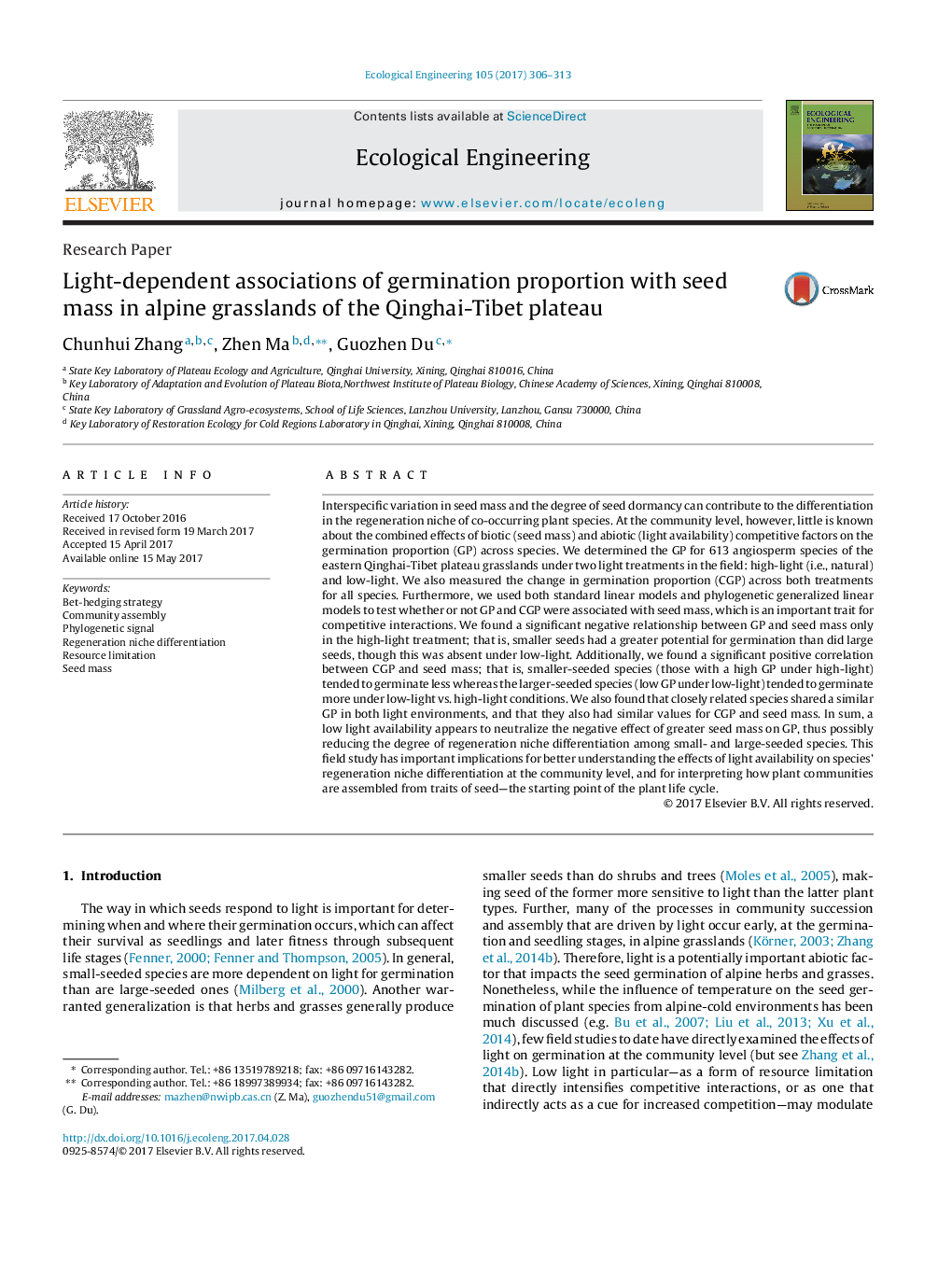| Article ID | Journal | Published Year | Pages | File Type |
|---|---|---|---|---|
| 5743624 | Ecological Engineering | 2017 | 8 Pages |
â¢Germination proportion (GP) was negatively related to seed mass under high light.â¢Low light appears to neutralize the negative effect of greater seed mass on GP.â¢Closely related species share a similar response in GP to light availability.
Interspecific variation in seed mass and the degree of seed dormancy can contribute to the differentiation in the regeneration niche of co-occurring plant species. At the community level, however, little is known about the combined effects of biotic (seed mass) and abiotic (light availability) competitive factors on the germination proportion (GP) across species. We determined the GP for 613 angiosperm species of the eastern Qinghai-Tibet plateau grasslands under two light treatments in the field: high-light (i.e., natural) and low-light. We also measured the change in germination proportion (CGP) across both treatments for all species. Furthermore, we used both standard linear models and phylogenetic generalized linear models to test whether or not GP and CGP were associated with seed mass, which is an important trait for competitive interactions. We found a significant negative relationship between GP and seed mass only in the high-light treatment; that is, smaller seeds had a greater potential for germination than did large seeds, though this was absent under low-light. Additionally, we found a significant positive correlation between CGP and seed mass; that is, smaller-seeded species (those with a high GP under high-light) tended to germinate less whereas the larger-seeded species (low GP under low-light) tended to germinate more under low-light vs. high-light conditions. We also found that closely related species shared a similar GP in both light environments, and that they also had similar values for CGP and seed mass. In sum, a low light availability appears to neutralize the negative effect of greater seed mass on GP, thus possibly reducing the degree of regeneration niche differentiation among small- and large-seeded species. This field study has important implications for better understanding the effects of light availability on species' regeneration niche differentiation at the community level, and for interpreting how plant communities are assembled from traits of seed-the starting point of the plant life cycle.
